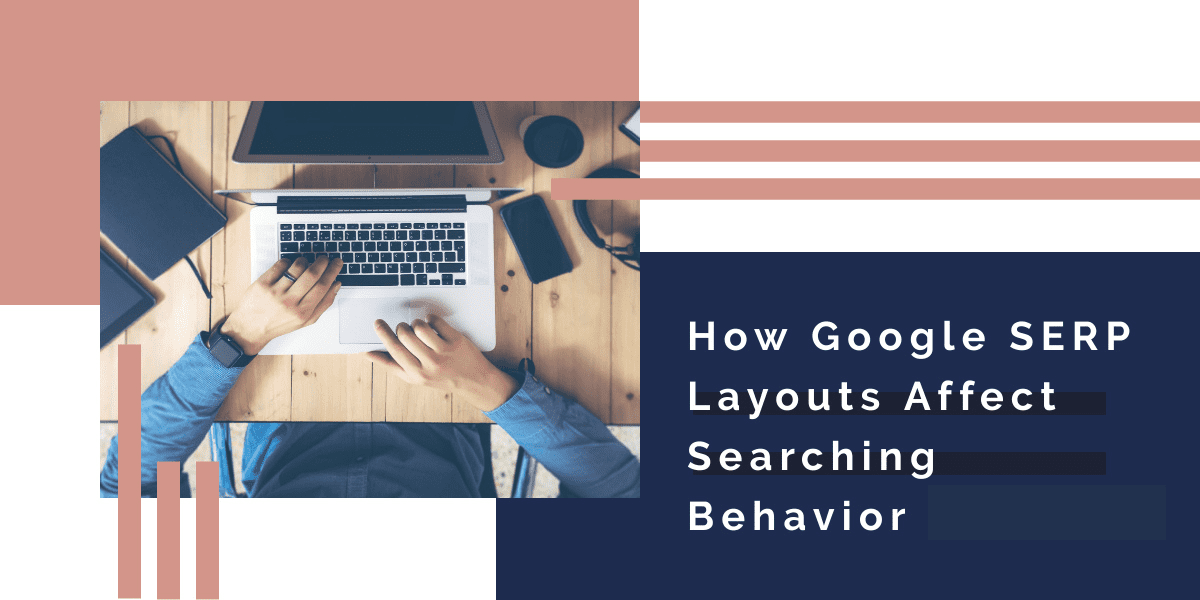Before understanding its working we should know what is Google SERP. It stands for Search Engine Results Pages which is given to the users when they try to search for something. And after that, the person enters their search issues upon which Google shows all the possible solutions that are a SERP. As you will notice every SERP will be different as the user query is not the same all the time. This happens because virtually all search engines like Google customizes the experience for their users by giving them all the possible results and you may find that two SERP will be visible similar to by containing the same results but it will have subtle differences. Based on this, let’s discuss this in more detail on Google SERP.
There are two types of results
Organic results
These results list the web pages which will appear as an output or result of the search engine’s algorithm. All the specializers who are known as SEOs do the optimization of the web content as well as the websites to rank more highly in organic results. There are three different types of primary internet search:
• informational searches– in this the people want to find the information on a given topic. In simple words, the users who are looking for these queries are not looking to buy something and they only want to get informational results that are displayed on the SERP.
• Navigational searches– in these searches the user wants to visit any specific website by locating a URL and they can no longer remember, or another kind of navigational objective.
• Transactional searches– these searches refer to paid results which are mostly displayed on SERP. They usually have high commercial intent, and all the queries are leading to the transactional SERPs which sometimes include a keyword like “buy” and the other things which will be suggested as a strong desire to make any type of purchase.
Paid Results
These are referred to as the paid results because when they are displayed by the advertiser they will be paid. The results are more likely to have a wide range of forms, and many advertising formats that usually attract the needs of the advertiser.
Now we have understood the SERP thing and types of results in the search engine. Let’s see how google SERP layouts affect searching behavior now.
Searching behavior 2024
There are many results and data to know how a user uses Google SERP and then what are the things they usually ignore, and what they focus on more. The changing speed of SEO which refers that anyone working in this sector should keep abreast of the changes and try to adapt the strategies so that they can meet the ever-growing demands easily of the searcher or user.
The time when there were featured snippets that were rolled around the year 2016 and then became the focus of a lot of attention for all the SEOs.
• The changing
There are so many theories that show how a user uses the SERPs and they typically focus on the things that people like the most and what they usually ignore. All these types of studies will give you an idea of all the fascinating things and help you to shape all your strategies that are putting in place for the clients.
• The biometric technology
Biometric is the body measurements and all the calculations which are related to the human characteristics and its authentication are used in computer science as the form of identification and control. And the biometric technology refers to a technology which helps to identify any person based on some aspect of their biology like fingerprint recognition. And thus it is used for the identification f any person who is under surveillance. This technology can be used for a wide range of things.
One of the biometric experts was experimenting to know the google SERP effect on searching and in this many users were asked to perform some searches in Google with the main motive of researching and buying a new phone or gadget. All the users were doing their specific tasks at various steps of purchasing intent. The test was going on desktop and the user began each task on the homepage of Google. So from that point they start telling the moderator when they found any information which they are looking for and step ahead to the next task.
The data inputs which include in this test was
• The eye-tracking
• The facial expression of the person analysis
• And last the galvanic skin response to the search (GSR)
Their main objective was to understand the gaze behavior of the user on SERPs and engagement behavior on SERPs. They were trying to identify any type of emotional response to the Google SERPs and the interaction with different types of results like knowledge graphs, ads, etc.
The research scenario
The research was basically on buying a new phone and several tasks were given to the users, and then at last choosing the search term first for correlating data. And the second thing was that all the users should get the same result they search for. And in the end, this goes well but in some of them, SERP presents have some small variations.
The final results
According to a study the featured snippets usually get around 8.6% of clicks and on the other hand around 19.6% to the first natural search. But when there are no such featured snippets the first relation was getting around 26% clicks. So basically through research, the snippets are attracted the most and they are consistently the first thing which is viewed by many people and where people spent most of the time. This concludes that these snippets are giving people their desired results very quickly and effectively. And thus they are getting the importance of real estate within a SERP.
People also ask things on the search engine and it is also a place to find out queries and answers that people are actively looking for but how do people interact with them? So after featured snippets when we take this element people also gaze back at them but there are fewer clicks and shows limited engagement. This can be considered that these are distracting the people or impacting their search journey away.
Now next is the knowledge graph, as through the research when any user searches for a purchase intent then the knowledge graph tries to attract the attention sooner, because of visible prices. but users focus on the organic results now also and this shows that the knowledge graph is useful but it does not work to detract from the main SERP column.
Searches for the location have some keywords like “near me”. So from the fixation data, the user’s attention is more on the local listings rather than the map or any other organic listings. This whole show shows that the attention is more greatly on the details in the local listings.
And in different variants of the SERP, the additional product was row led to the people who are spending a long time in reviewing the SERP. And after reviewing expressing their negative emotions towards SERP.
The research for the purchase intent shows that the horizontal product bar which operates, by picking up the best engagement and clicks. People still focus on the organic listing before turning to the shopping bar. The knowledge graph was not so effective. Thus the output indicates that the results for shopping play an important role/ as in both the variations the initial result was the most clicked thing in the SERP and shows a basic PPC or say organic listings which usually remain effective highly at the time of customer journey.
The galvanic skin response
First, we need to understand what is galvanic skin response. This refers to the sweat glands activity which is reflective of the intensity of any person’s emotional state. This can also be called emotional arousal and the level of these changes responses to the environment as if we are scary or joyful. When the researchers were going on this particular thing to know the behavior then there was some correlation between the self-reported task and a higher than normal GSR.
So from all the researches, there are many things that we can know and make the conclusions
• So first we can say that the nature of all the searches was having a great change to the engagement behavior. This happens when a similar type of SERP layouts is displayed on the desktop.
• Coming to the featured snippets which are highly effective for all the information-based searches by the users. And some are choosing not to follow through to the site after finding any solution. But most of the users still clicked through to the website.
• The local listings were engaging and giving people all the essential information in an effective format. The users were getting the answers they were looking for.
• And the addition of the knowledge graph, PAA and featured snippets, PPC ads, and the last SEO listings still playing a huge role in the searching behavior.
The featured snippets were not that bad and all the changes are that you have to work on this and how snippets work and are they worth it or not. If you want to search purely informational and educational searches then this performed well. People spend a long time on this and you can also review people’s reactions to the featured snippets when it contains irrelevant or wrong information.
In other research, snagging the top spot is challenging but around 33% of the time is enough to earn a click. The main thing which is noticed is that many users are searching to find that they need things without clicking on any type of links, not the paid one as well as the organic results. Around 33 users have searched from mobile phones on the SERP without a click. For both desktop and mobile devices paid search has gained less than 5% of all the clicks and ads get over 4.61% of clicks and similar on mobile phones.
This doesn’t mean that you don’t get anything for paid advertising on a search engine like Google. But it’s important to know all the limitations. Branded queries are getting more attention and a very high click-through rate (CTR). If a user directly searches for your brand is likely to click through but people searching non-branded keywords are more likely to be in the no-click category. So around 70% of users will click on the organic clicks mainly but for these people who are searching for something like web hosting only around 39% do this.
An image carousel is showing an increase in the CTR as when there is an image carousel a collection of images across the screen will be displayed to the users. The click-through rate of this has been increased by over 12%. Related searches also show a decrease in the clicks. SERPs include the related searches section of many links which has come down to 20%. All the researchers may have less to do with the links in this section and more to do with Google deciding for this section that already has less CTR. Video carousels are also shown a decrease in clicks and come to 10%. The keywords which are shown by the Google videos are very likely to those the search engine knows how people prefer video outputs. So a certain amount of videos are featured to drive clicks from the organic results. When you want to cope up with these things just make sure you win for branded keywords and always do SERP research to learn what are different features on the pages. Prioritizing your keyword is the best strategy that is based on the Google SERP features.



Add a Comment